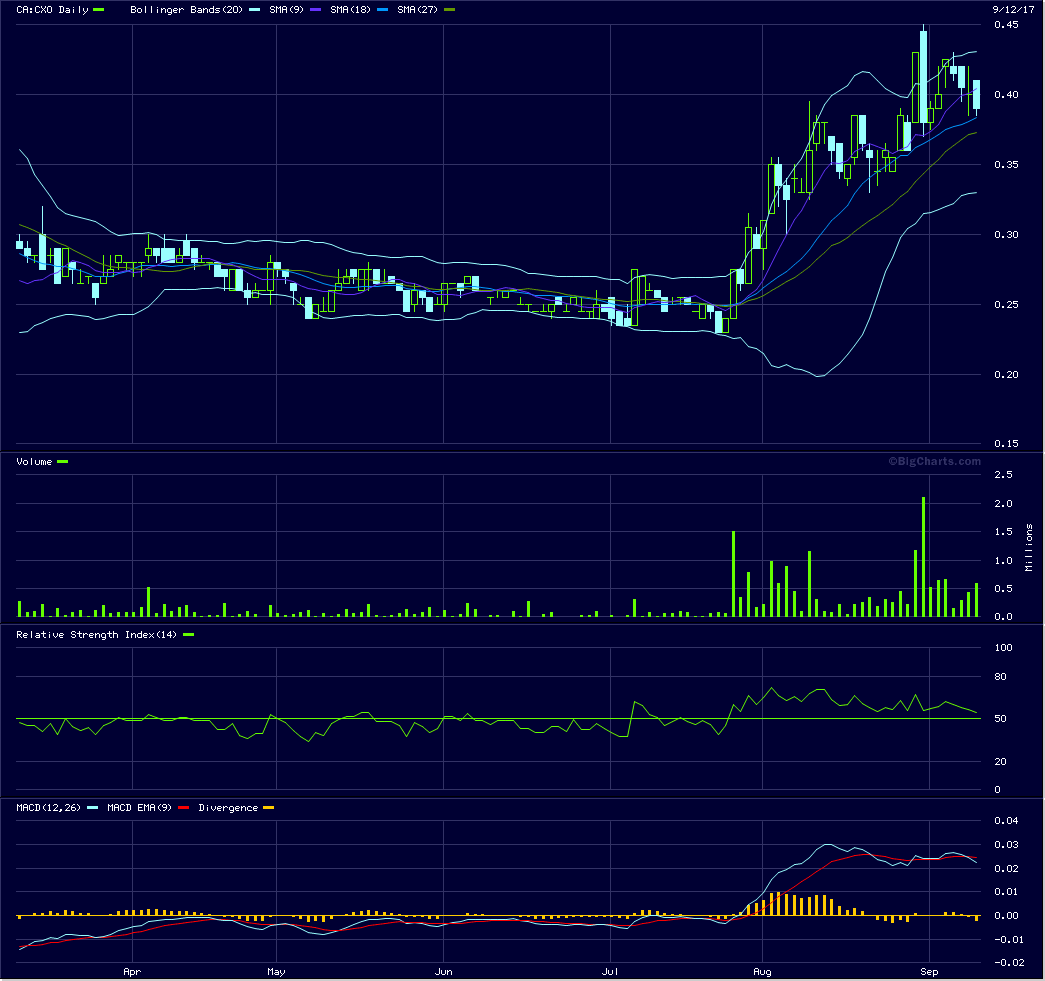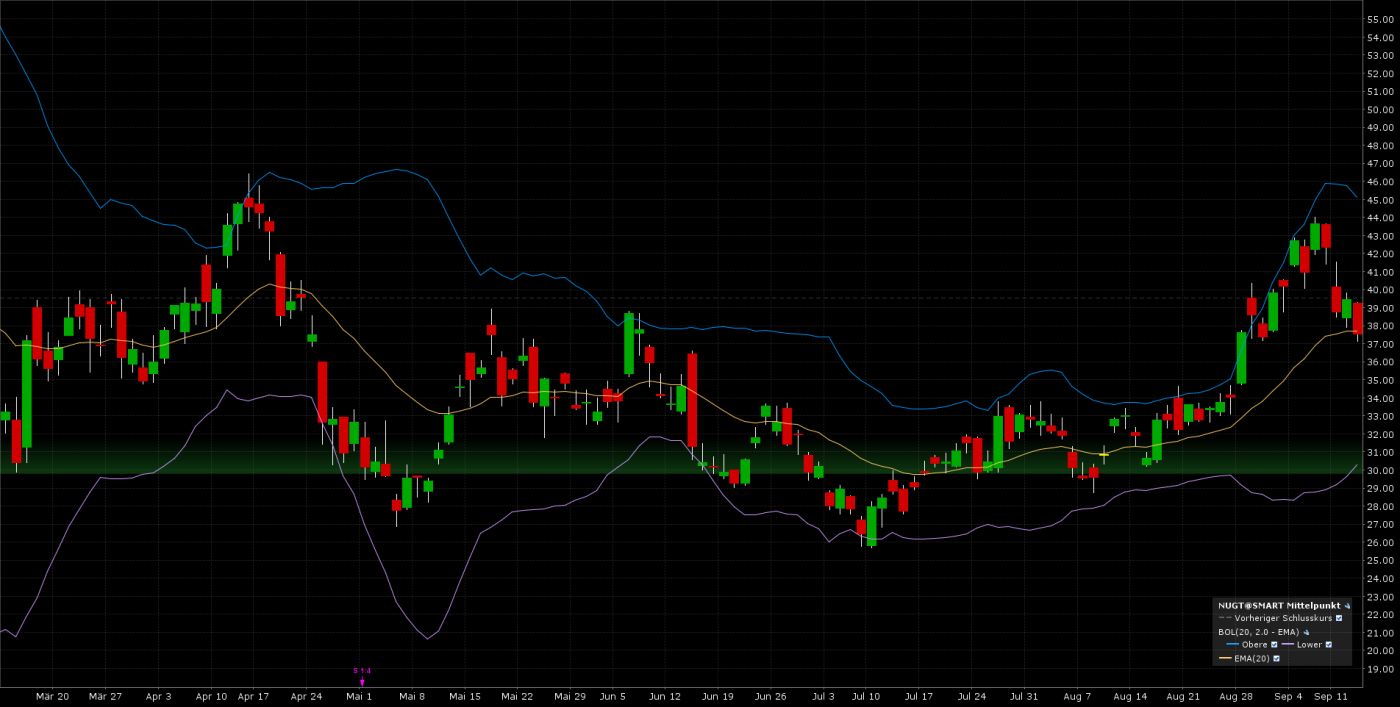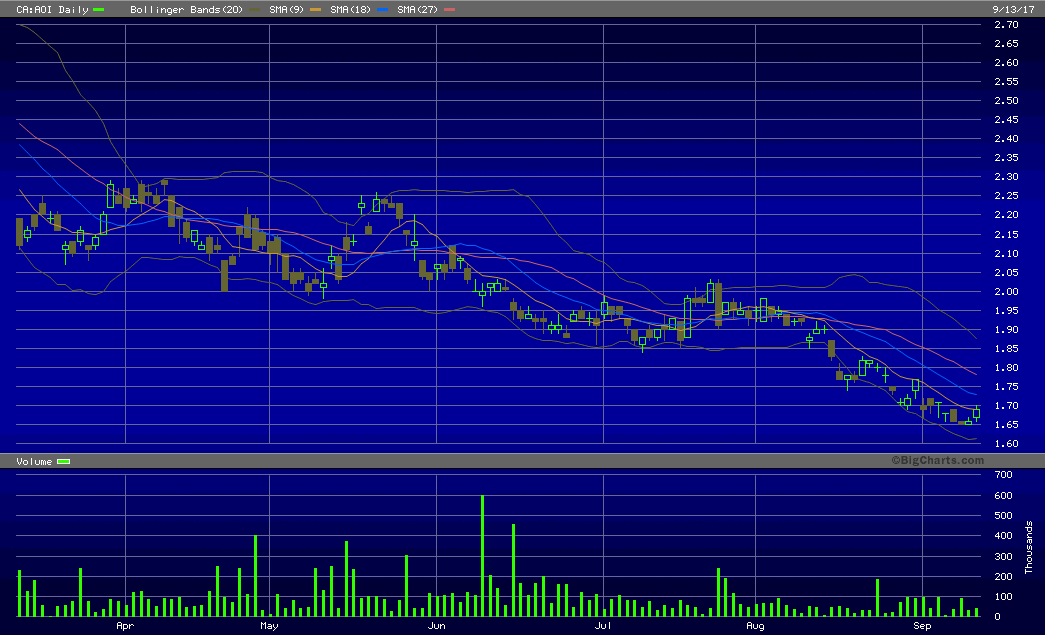Algold drills 15 m of 6.84 g/t Au at Tijirit
2017-09-12 07:13 ET - News Release
Mr. Francois Auclair reports
ALGOLD INTERCEPTS 6.84 G/T AU OVER 15 METERS AT ELEONORE
Algold Resources Ltd. has released additional assay results from the diamond (DDH) and reverse-circulation (RC) drilling carried out on its Tijirit property in Mauritania as part of the corporation's phase 3 25,000-metre drilling campaign. The results, which include 6.84 grams per tonne gold over 15 metres, continue to demonstrate the high-grade nature and the continuity of the mineralization, both near surface and at depth, over the 3.5-kilometre strike length of the Eleonore zone.
Highlights (1):
RC T17RC107 (Eleonore South) -- 6.84 g/t Au over 15 m, including 24.00 g/t Au over four m, approximately 40 metres below the surface and 2.16 g/t Au over eight m, including 6.04 g/t Au over two m, approximately 100 metres below the surface;
RC T17RC122 (Eleonore South -- new subzone) -- 8.16 g/t Au over five m, including 28.00 g/t Au over one m, approximately 50 metres below the surface;
DDH T17RD139 (Eleonore South) -- 21.53 g/t Au over 1.8 m at approximately 115 metres below the surface;
DDH T17RD002 (Eleonore South) -- 10.24 g/t Au over 3.7 m at approximately 130 metres below the surface;
DDH T17DD016 (Eleonore North) -- 14.62 g/t Au over 3.3 m at approximately 85 metres below the surface;
RC T17RC109 (Eleonore North) -- 5.76 g/t Au over two m at approximately 95 m vertical depth; this hole extends the Eleonore North zone by 100 metres;
RC T17RC115 (Eleonore Central) -- 2.70 g/t Au over seven m, including 8.06 g/t Au over two m, at approximately 35 metres below the surface.
(1) All intersections reported are downhole lengths.
Eleonore South
Hole T16RC107 (Section E8300), located approximately 50 metres south of T17RC045 (14.1 g/t Au over 10 m, referenced in Algold's press release dated April 25, 2017), returned two significant near-surface mineralized intervals. Hole T16RC107 was orientated at a more optimal bearing than T17RC045 and served to confirm the north-to-north-northeast strike direction of the mineralization. With surface outcrop masked by a transported overburden, the intersection of these gold-bearing structures confirms the continuity of high-grade mineralization associated with kilometre-long shear zones at Eleonore South zone.
Sixty metres south of hole T17RC107, diamond tail hole T17RD002 (Section 8200) was drilled to test for potential plunging high-grade structures. The hole successfully intersected the vertically dipping mineralized zone identified in hole T17RC003 and although the result was not significant, it does suggest that higher-grade, wider mineralized plunges are possible. Mineralization was also confirmed 50 metres north of hole T17RC045 in hole T17RC112 (Section E8400), which remains open along strike to the north.
Five hundred metres south of hole T17RC045, diamond tail hole T17RD139 (Section E7880) intersected two gold-rich zones, on the same structure, 116 metres and 140 metres below the surface. Screen fire assays confirmed the presence of coarse gold (greater than 105 micrometres) as shown in a photo on the company's website.
Hole T17RC122 represents a new discovery and the most easterly mineralized area intersected at Eleonore South. The area displays an assemblage similar to other Eleonore mineralization identified to date with quartz, biotite and pyrite associated with local shearing. The structure is believed to be dipping near vertically. Results of recent drilling carried out to test the strike and downdip extensions of the structure are still pending.
Eleonore North
In DDH T17DD016 (Section 9840) a steeply dipping visible gold-bearing quartz vein was intersected at 109 metres. The gold was finely disseminated along the selvages of a chlorite-biotite-pyrrhotite alteration zone. The core drill hole confirms the vertical dip of the structure and is the deepest intersection on this vein to date, at 85 metres below the surface. The vein remains open at depth.
Hole T17RC109 (Section 10600) intersected a high-grade quartz vein on the shallow-dipping northern most vein, currently identified in the main Eleonore area. This hole confirms that the mineralization is still open at depth, with this intercept being 50 metres downdip of the mineralization intersected in hole T17RC059.
Drilling program
The phase 3 20,000-metre RC and 5,000-metre DDH drilling program was initiated on Feb. 1, 2017, with the objective to further delineate the high-grade gold deposit. The phase 3 drilling program concluded on Aug. 25, 2017, with 182 RC holes, 18 DDH and 30 RC precollar/diamond tails completed for a total of 24,205 metres of RC and 5,930 metres of diamond drilling.
As of Sept. 1, 2017, Algold had collected 16,188 samples (excluding quality assurance/quality control) as part of the phase 3 drilling program, with 9,522 samples having been sent to the SGS Bamako facilities for analysis. Algold is in receipt of 8,975 assay results, with 7,213 samples still pending (excluding QA/QC).
In order to reduce future processing time for assay results analysis, a mobile site preparation unit (MSPU) managed by SGS has been installed on the Tijirit property. The MSPU laboratory became operational in late August and is expected to increase efficiency and reduce lag time in the preparation and shipment of assay samples, thereby reducing overall turnaround time for assay results.
ASSAY RESULTS -- PHASE 3 DRILLING PROGRAM
Hole From To Vertical depth* Average grade** Width***
ID (m) (m) (m) (g/t Au) (m)
T17DD016 109.00 112.30 84 14.62 3.30
T17RC109 123.00 125.00 95 5.76 2.00
T17RC110 113.00 115.00 88 3.37 2.00
T17RC113 135.00 138.00 102 1.94 3.00
T17RC115 45.00 52.00 37 2.70 7.00
47.00 49.00 8.06 2.00
T17RC116 130.00 133.00 102 2.24 3.00
T17RC117 42.00 51.00 35 1.37 9.00
T17RD081 38.00 44.00 32 1.79 6.00
60.50 62.00 47 4.99 1.50
T17RC107 42.00 57.00 37 6.84 15.00
42.00 46.00 24.00 4.00
117.00 125.00 95 2.16 8.00
118.00 120.00 6.04 2.00
T17RC122 62.00 67.00 50 8.16 5.00
63.00 64.00 28.00 1.00
T17RC126 38.00 42.00 31 1.88 4.00
T17RD002 168.00 171.70 131 10.24 3.70
168.5 170.00 9.90 1.50
T17RD044 155.75 159.75 122 2.81 4.00
186.60 189.65 145 5.81 3.05
188.00 188.55 28.30 0.55
T17RD139 148.75 150.55 116 21.53 1.80
182.00 184.4 143 5.14 2.40
183.00 184.4 7.99 1.40
* Vertical depth of intersection below RL collar.
** Weighted average grade, composite based on a minimum grade of 0.3 gram per tonne
Au with an internal dilution of 0.005 g/t Au over two m and an edge grade of 0.25
g/t Au permitted.
*** Downhole length (believed to be close to true width).
No capping of higher values has been applied.
Note: Complete assay results are available on Algold's website.
Detailed geological descriptions of all mineralized zones can be found on Algold's website and on SEDAR in the report entitled "Algold 43-101 technical report: Tijirit maiden mineral resources estimates for the Tijirit gold project in Mauritania."
Quality assurance/quality control (QA/QC)
Analytical work for drill core and chips, geochemical samples, and rock chip samples is being carried out at the independent SGS Laboratories Ltd. in Bamako, Mali. The 50-gram fire assay with ASS finish analytical services is accredited by SANAS and carried out with a quality assurance protocol in line with ISO 17025:2005. Samples are stored at the corporation's field camps and put into sealed bags until delivered by a geologist on behalf of Algold to the laboratory in Bamako, Mali, where samples are prepared and analyzed. Until the end of 2016, samples were analyzed at ALS's facility in Loughrea, Ireland. Beginning in 2017, samples are analyzed at the SGS laboratory in Bamako. Samples are logged in the tracking system, weighed, dried and finely crushed to better than 70 per cent, passing a two-millimetre screen. A split of up to 1,000 grams is taken and pulverized to better than 85 per cent, passing a 75-micrometre screen, and a 50-gram split is analyzed by fire assay with an AA finish. Anomalous samples greater than five g/t gold are reanalyzed by 50-gram fire assay with gravimetric finish. Selected samples may be reanalyzed using a one-kilogram cyanide leach (bottle roll) using LeachWELL or the one-kilogram screen fire assay method. Blanks, duplicates and certified reference material (standards) are inserted to monitor laboratory performance during the analysis.
This press release has been reviewed for accuracy and compliance under National Instrument 43-101 by Andre Ciesielski, DSc, PGeo, lead consulting geologist and qualified person, and Alastair Gallaugher, CGeo (chartered geologist and fellow of the Geological Society of London), BSc geology, Algold's exploration manager in Mauritania, qualified persons as defined by National Instrument 43-101 standards of disclosure for mineral projects. Mr. Ciesielski has further approved the scientific and technical disclosure in the news release.
About Algold Resources Ltd.
Algold Resources is focused on the exploration and development of gold deposits in West Africa. The board of directors and management team are seasoned resource industry professionals with extensive experience in the exploration and development of world-class gold projects in Africa.
https://www.stockwatch.com/News/Item.aspx?bid=Z-C%3aALG-2504832&symbol=ALG®ion=C

auffi gehts!





